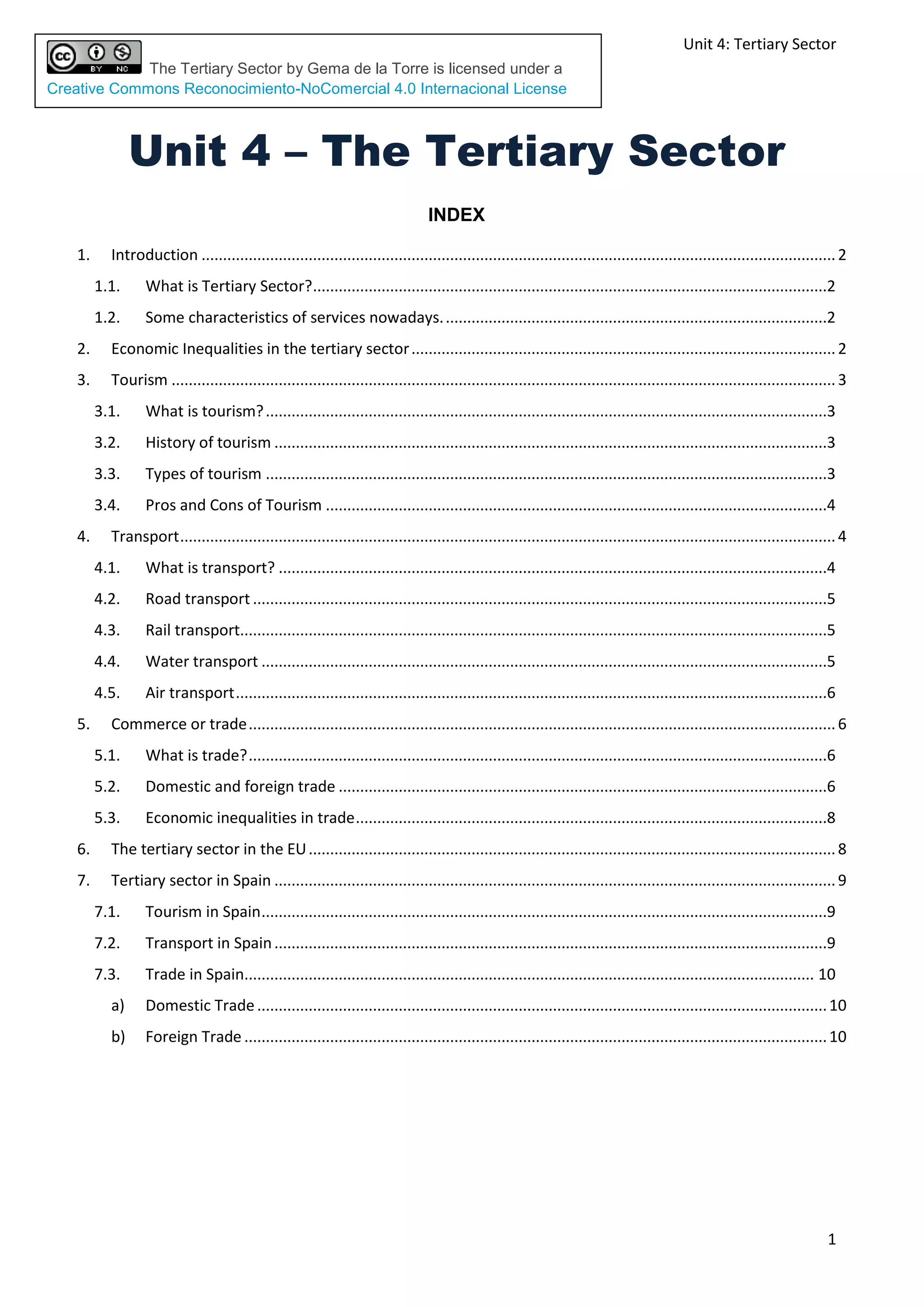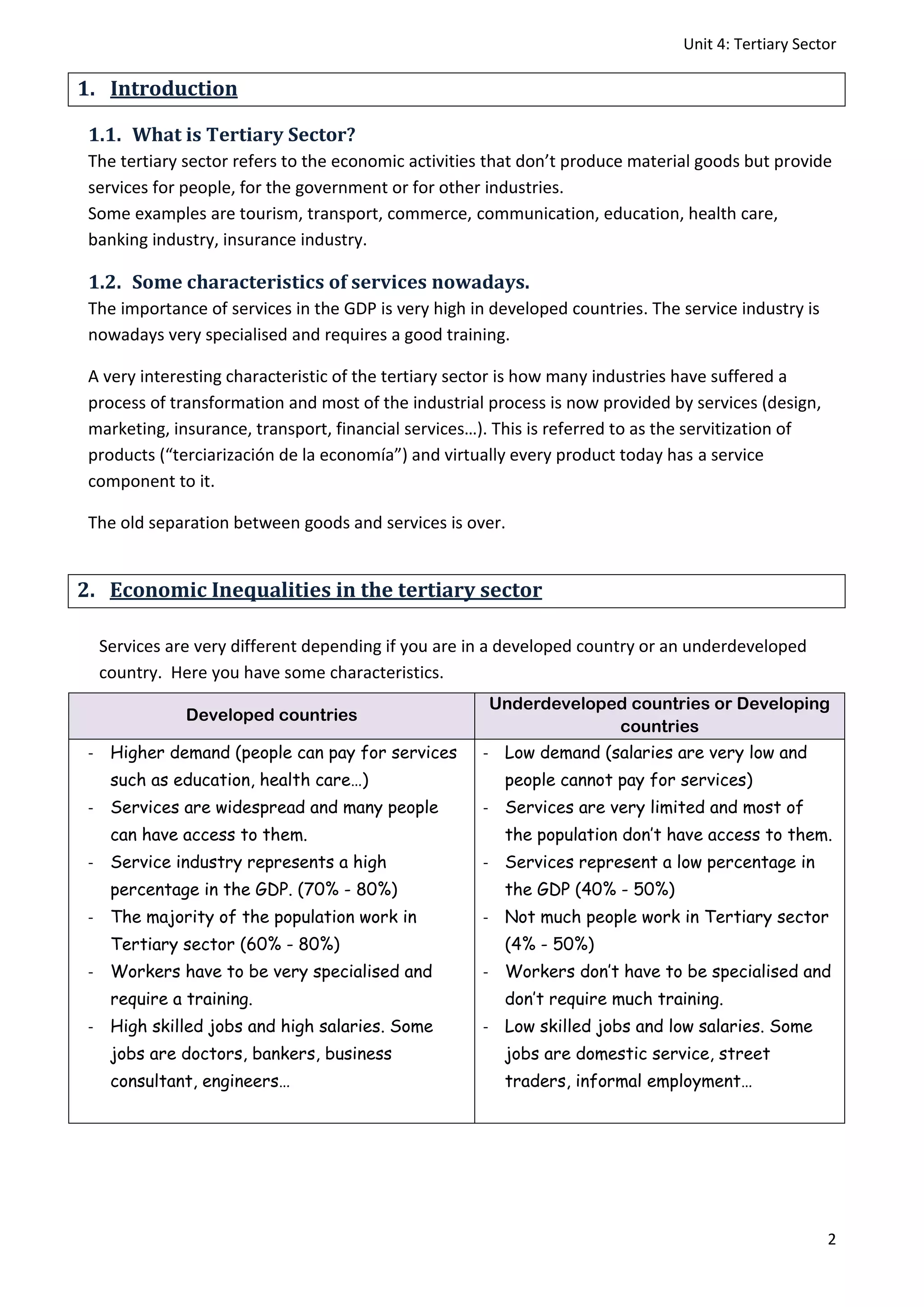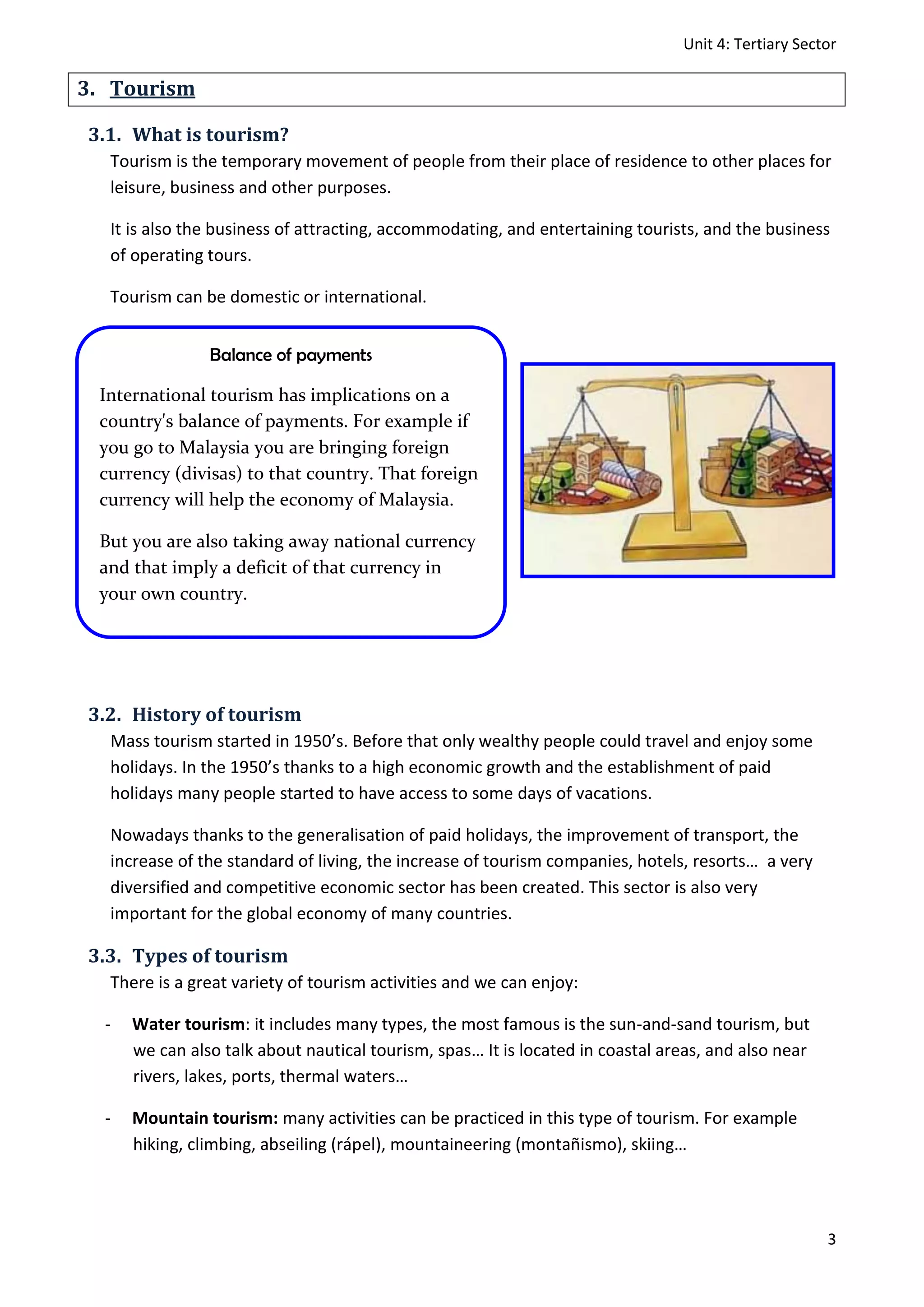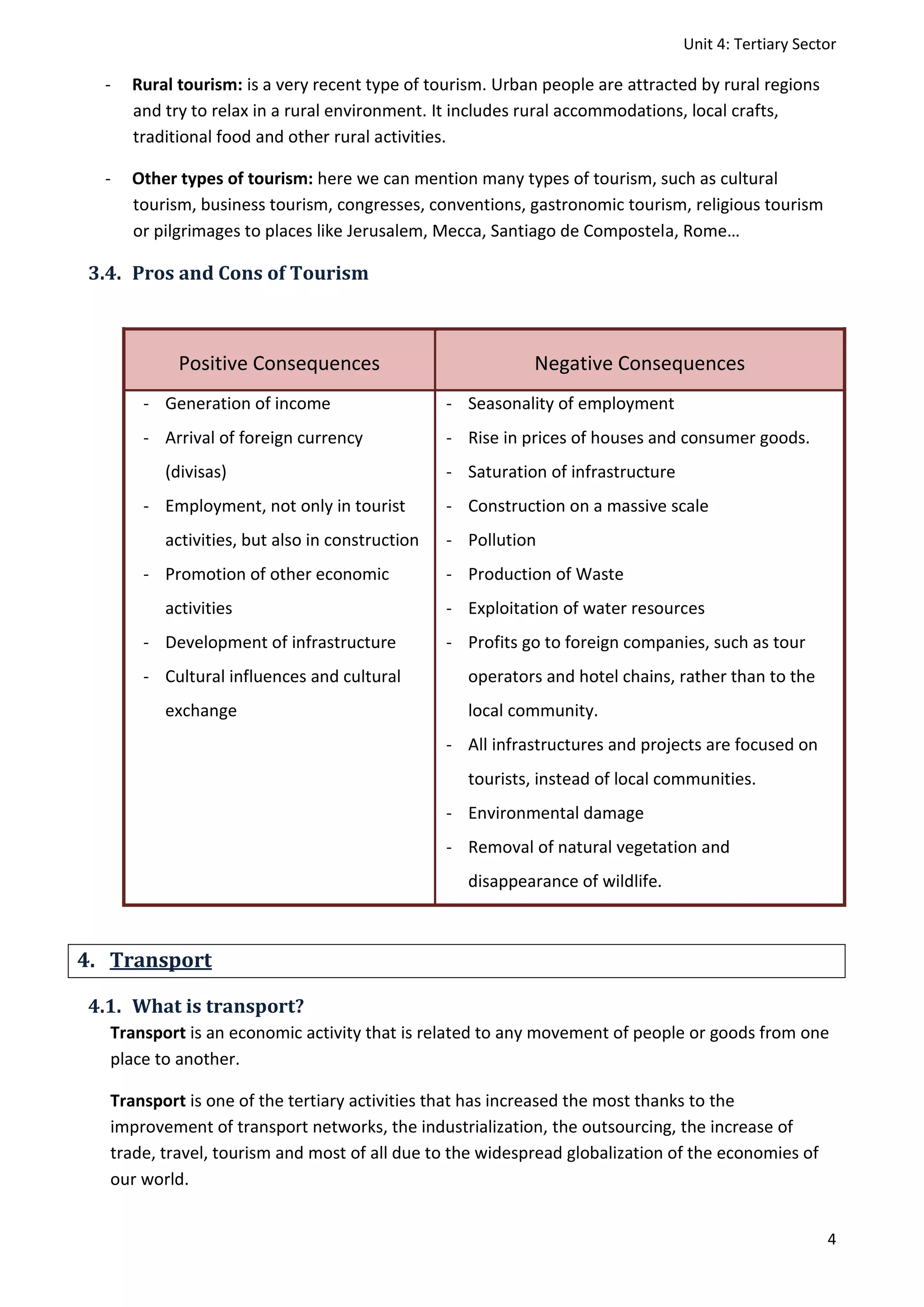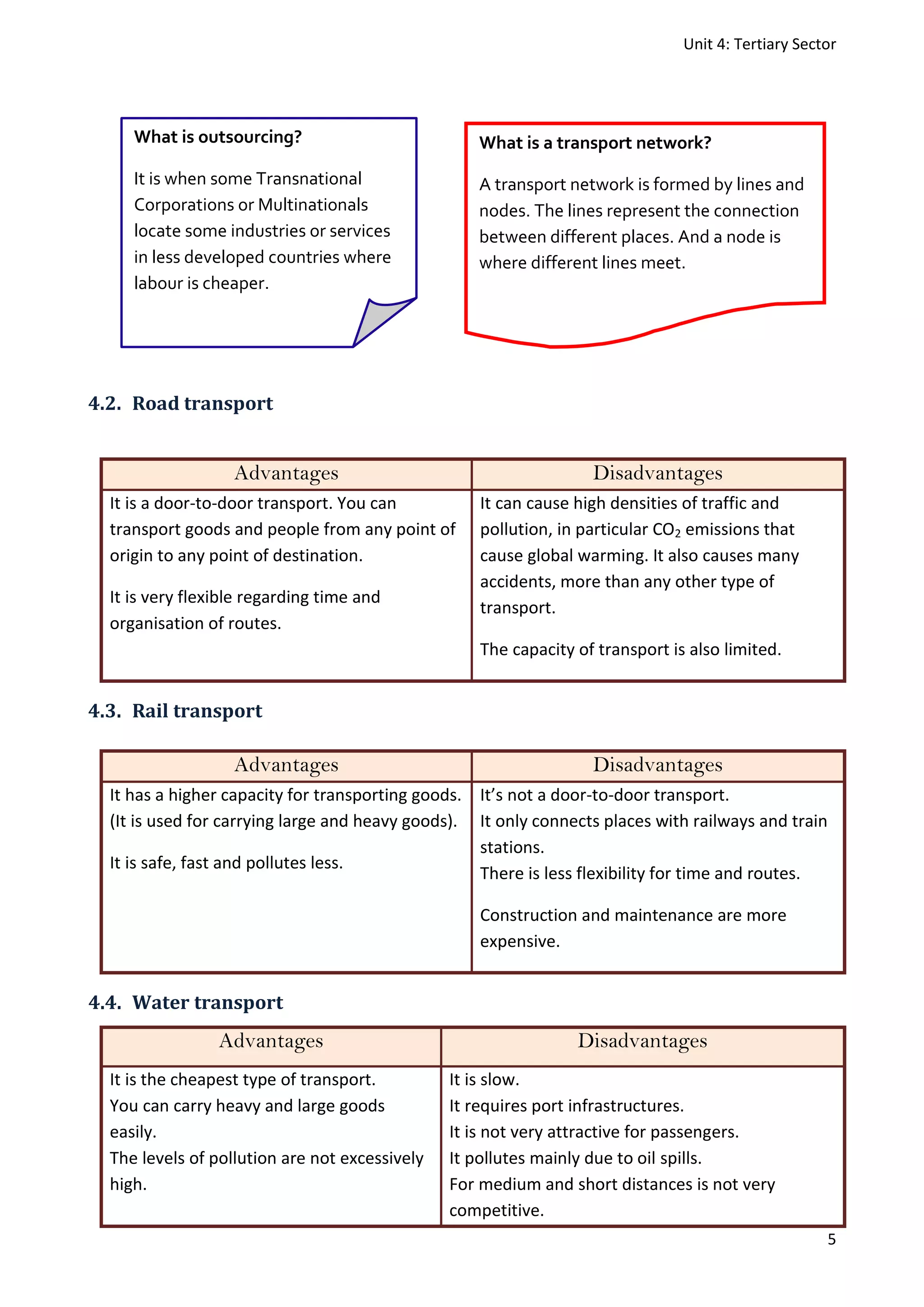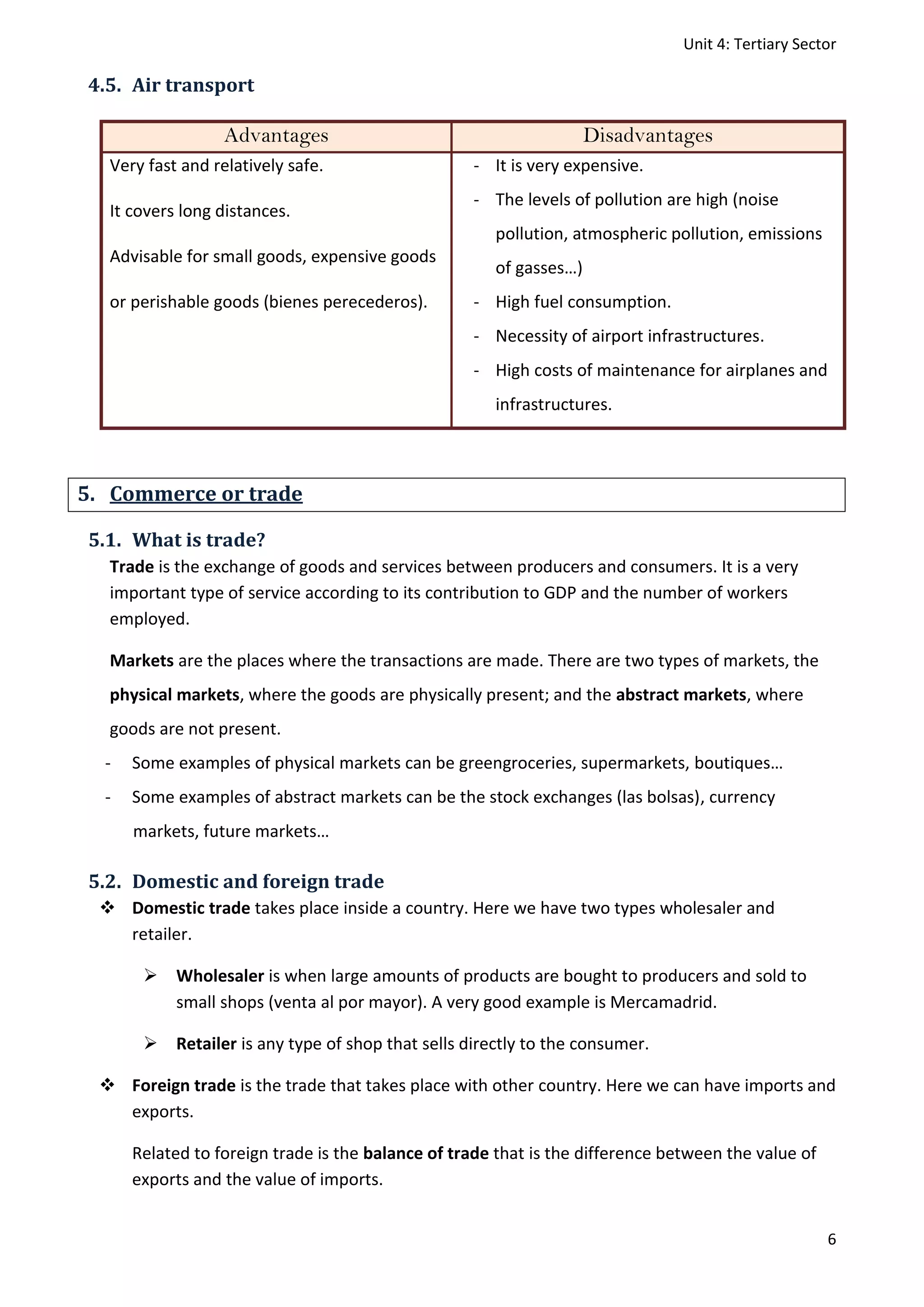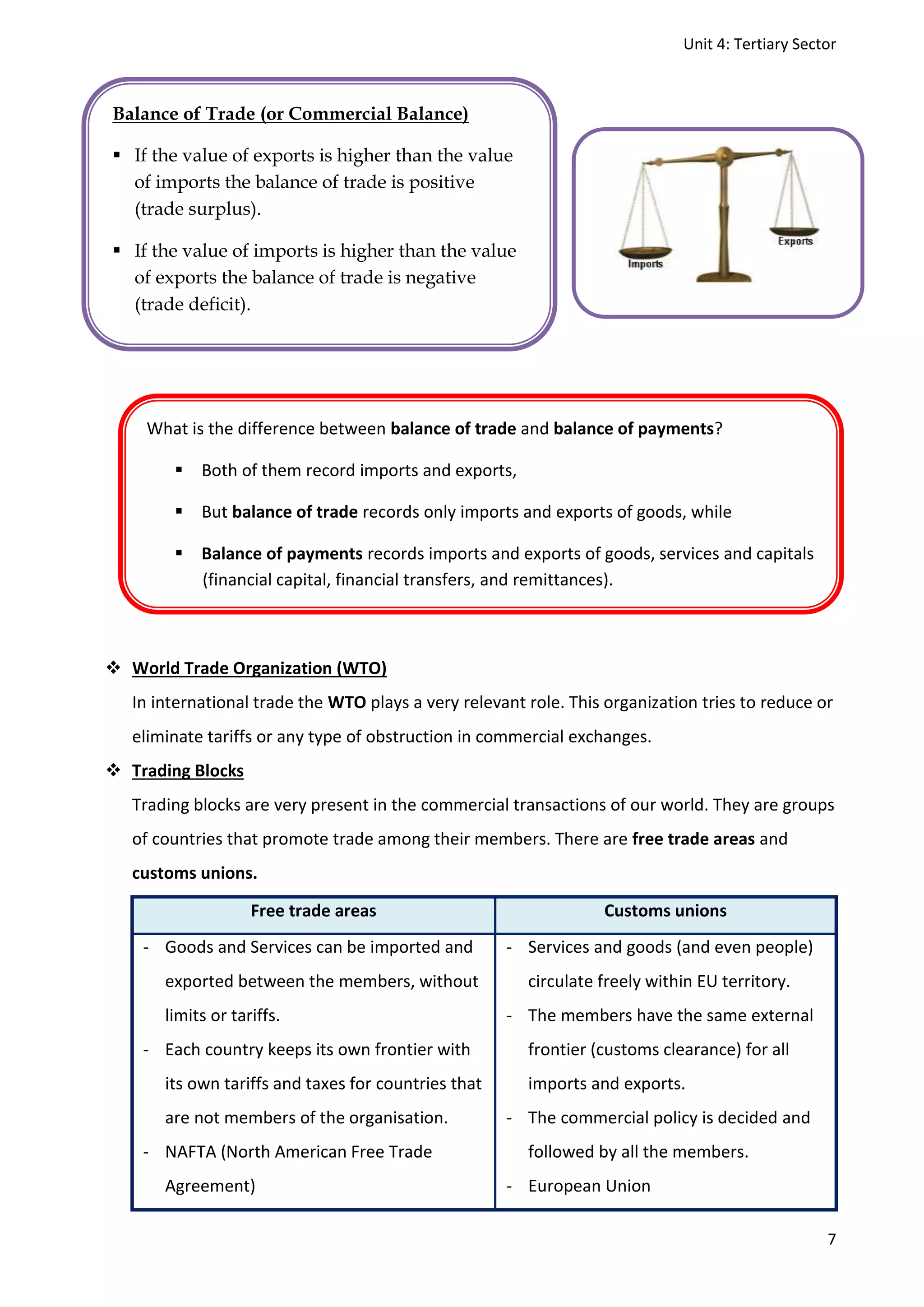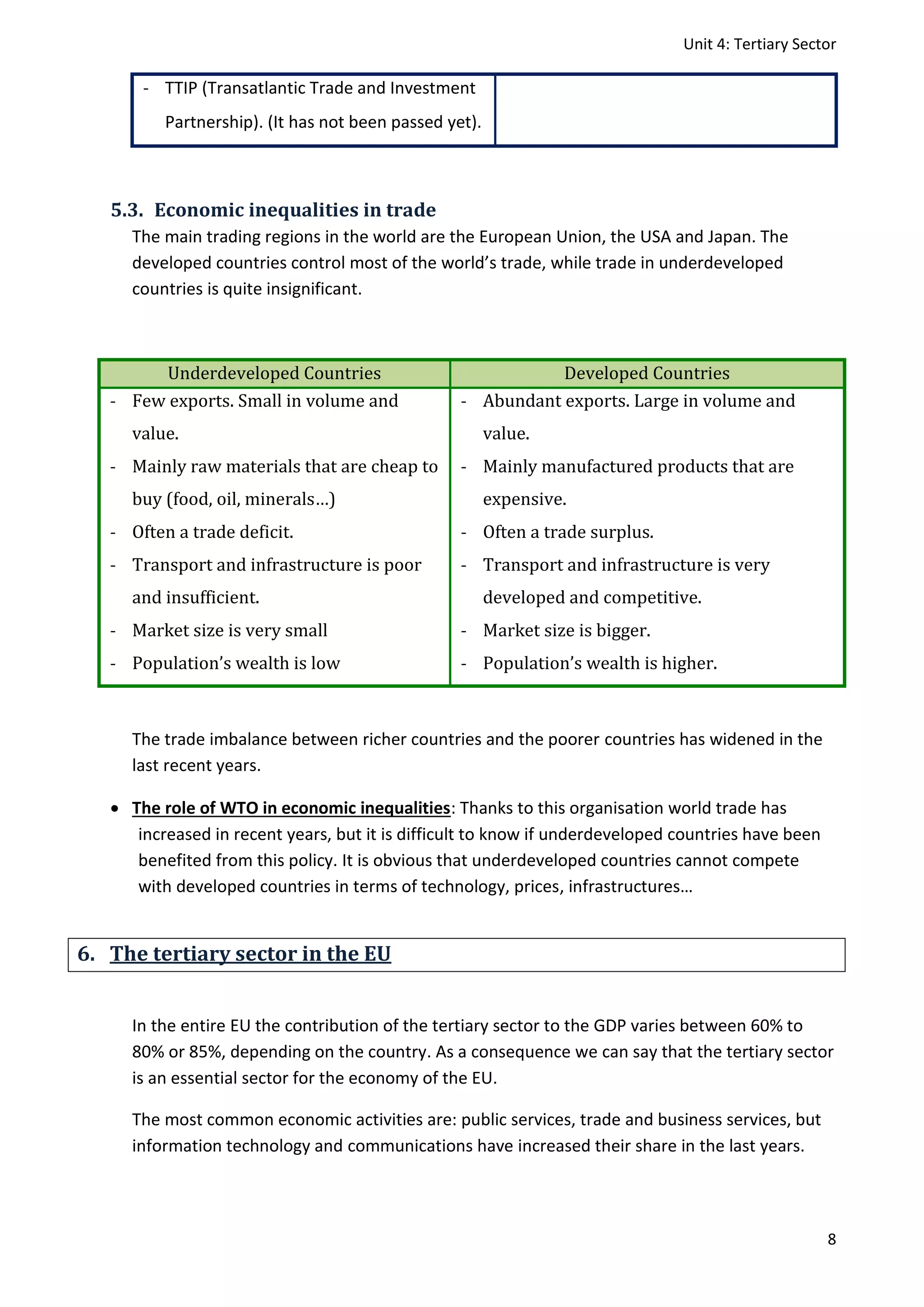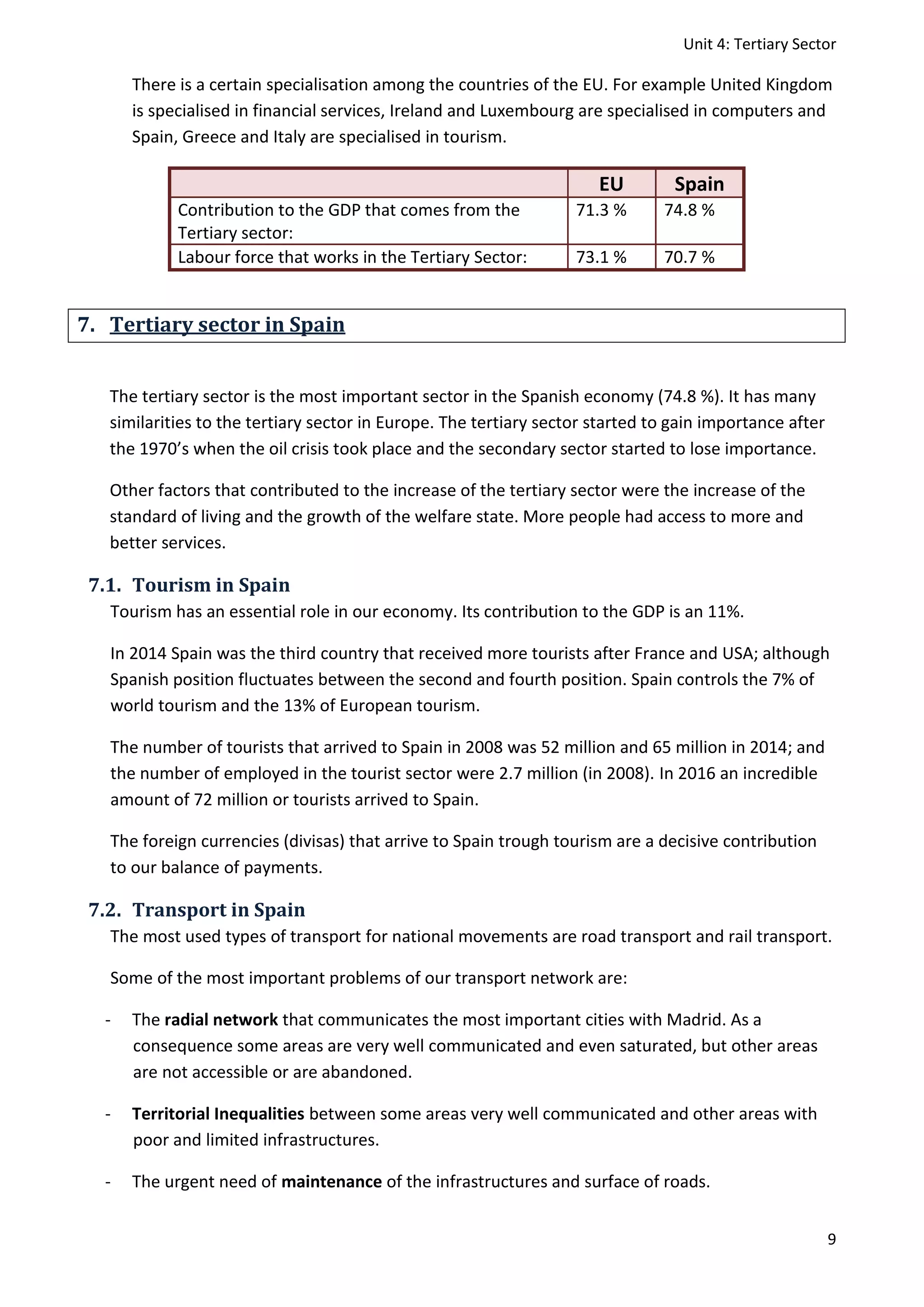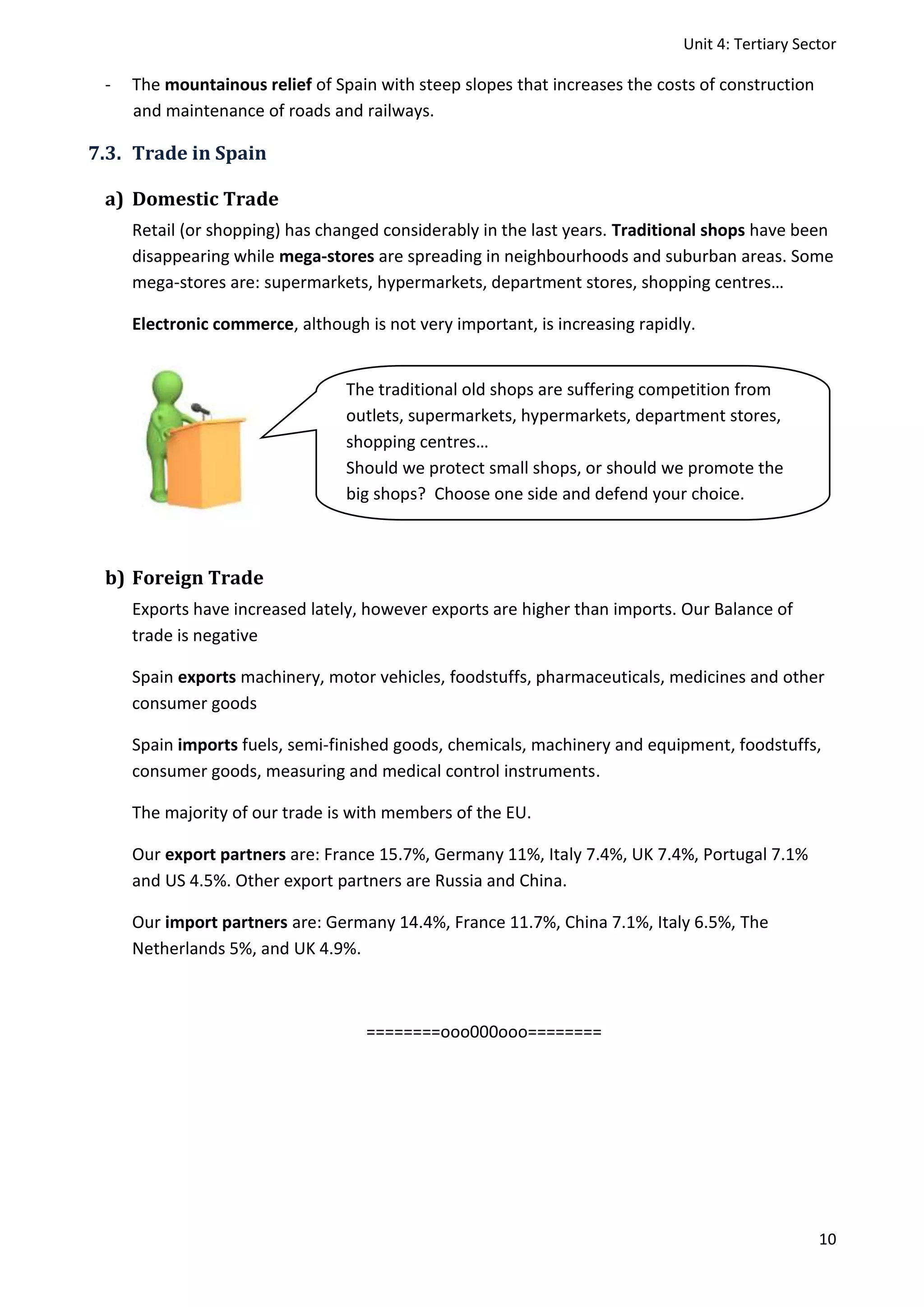This document provides an overview of the tertiary sector. It discusses key topics such as tourism, transport, and commerce. Regarding tourism, it notes that mass tourism started in the 1950s and is now a major global economic sector. For transport, it outlines different modes including road, rail, water, and air, along with their advantages and disadvantages. Commerce involves both domestic and foreign trade, with the latter including imports, exports, and trade organizations. The tertiary sector makes up a large portion of GDP in developed economies and countries like Spain have specialized in industries like tourism.
